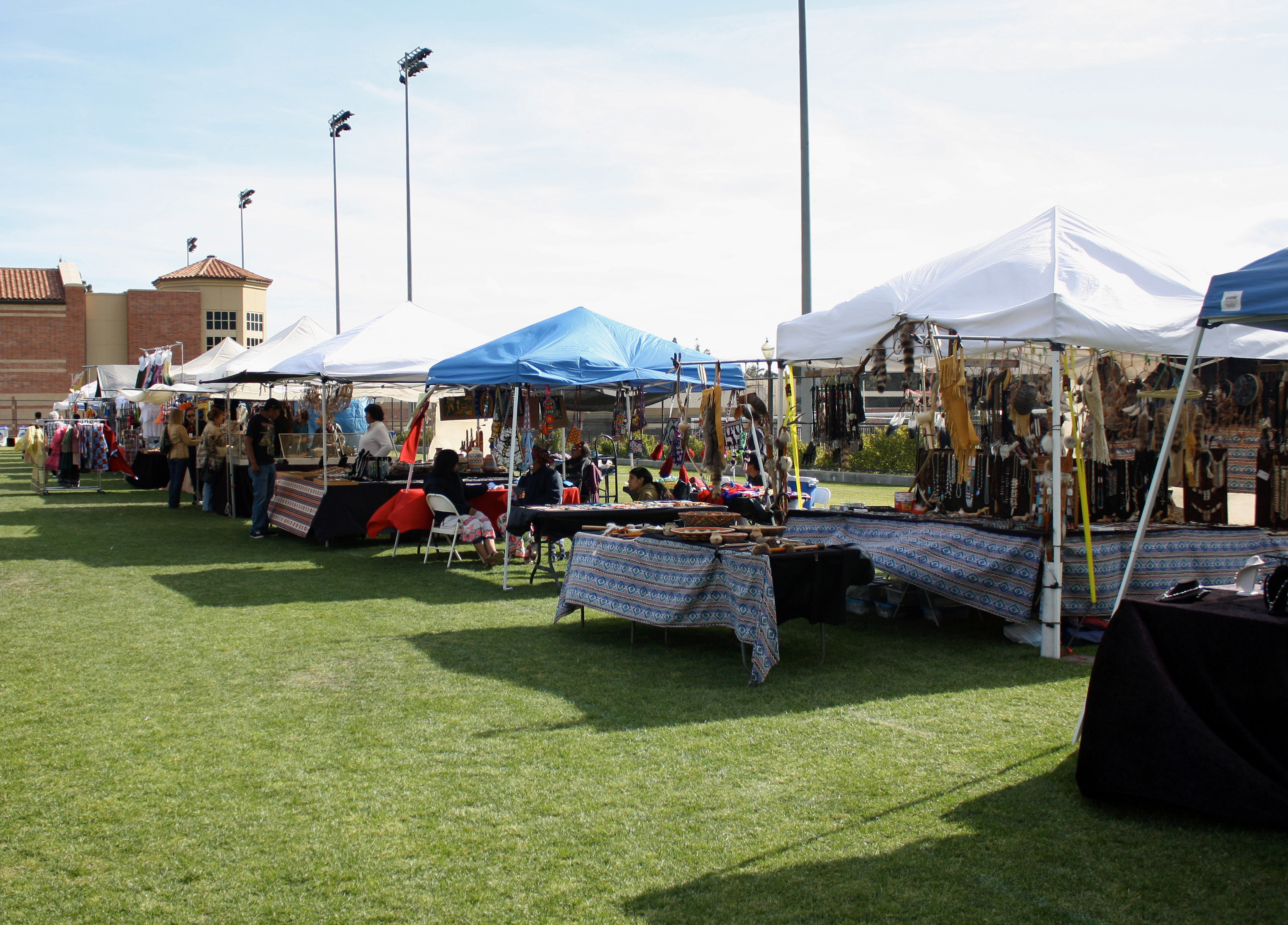
An array of different booths line the North Athletic Field during last year’s pow wow. The pow wow included dancing, singing and other exhibitions connected to American Indian culture.
Dancers draped in large, colorful shawls outstretch their arms as they dance to the beat of a drum. They spin and mimic the movement of a butterfly with their agile footwork, while their flashy shawls, fringe, feathers and vests whirl in a blur of color.
Tyla Va’ai-Letourneau will be among these Fancy Shawl dancers this weekend as part of the American Indian Student Association’s 27th Annual Pow Wow. This social expects to welcome more than 100 tribes to campus to take part in traditional dances, song and competition.
“Native Americans didn’t all die in those Western films. We still exist. We still have our traditions, and we just want to educate other communities about this as well,” said Va’ai-Letourneau, a second-year Design | Media Arts student and coordinator for this year’s pow wow. Va’ai-Letourneau, who is of Blackfoot heritage, said pow wows have become universal across American Indian tribes in order to preserve traditions in such a relatively small and dispersed community. Pow wows are also open to the public to share the American Indian traditions.
Vendors from across the country will attend to sell Native American foods such as fry bread and beef stew as well as vintage, traditional and more modern wares such as jewelry, bead work and other arts and crafts.
The event will also host dance competitions based on age, gender and dance style. For women, these dances include the Fancy Shawl, Women’s Buckskin, Women’s Cloth and the Jingle Dress Dance, in which dancers wear a dress with metal cones sewn into the fabric to create a jingling sound.
Men’s dances include Grass, Traditional, Straight and Fancy.
Non-tribal attendees will also be invited to participate is some dances, such as the Round Dance, during the inter-tribal portion of the pow wow. People who are not American Indians will be welcome to learn these traditional dances.
According to Phil Hale, a returning fourth-year American Indian Studies student, the regalia worn during these dances have gotten more colorful and intricate in recent years. While the clothing is still attached to the traditional style of buckskin and cloth, dancers’ accessories, such as bead work, hair ties and shawls, have become more flashy and modern.
Hale was a student during the club’s First annual pow wow in 1986. After taking a break from his studies, he has returned and will partake in this year’s pow wow as part of a drum troupe called Hale and Company.
Hale, a member of the Navajo tribe, will be drumming and singing in the Southern Plains style, a musical genre native to tribes of the Southern Plains that involves singing in a low, deep voice.
He said the event has grown since its first year and now boasts participants from the national Native American community, including members from New Mexico, Arizona, South Dakota and Illinois.
According to Hale, the pow wow is crucial to preserving the traditions of American Indian tribes as a whole.
“Even though the pow wow covers a whole spectrum of different tribes, it’s still a good example of pow wow culture as far as showing how we teach our values to our young people,” Hale said.
In addition to maintaining these traditions, the event also aims to promote higher education in the American Indian community. The American Indian Student Association hosts a Ms. UCLA Pow Wow Pageant to choose a young woman to receive a scholarship and represent the pow wow.
Fairuz Dakam, a fourth-year psychology student and coordinator of the Ms. UCLA Pow Wow Pageant, said that, while the pageant is not open to the public, the winning contestant will serve as a role model and educate others about Native American traditions at the pow wow and other cultural events throughout the year.
“This event … will expose (students) to a culture that isn’t so visible on campus and allow them to see how rich our culture is despite all the stereotypes and misconceptions some people have about us,” Dakam said.
